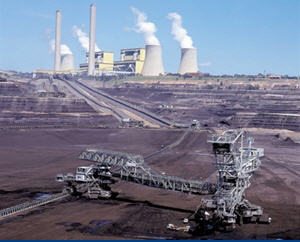AGL Energy has sought to justify its multi-billion dollar buying spree of coal generation assets over the last couple of years, saying that they were making big profits that could be invested in renewables “if and when” the investment climate improves.
AGL’s purchase of the coal assets saw an about-face in the company’s business model, from green to black, as the biggest investor in renewable energy (before its coal purchases), became the biggest generator of coal-fired power and the biggest emitter.
That is an image that the company is now desperate to change back, seeing it as crucial to retain consumers: hence its big push into solar and storage under new managing director Andrew Vesey, and the publicity surrounding its pledge to act according to global efforts to limit global warming to 2C.
 Chairman Gerry Maycock told the company’s annual general meeting that AGL was often asked how the purchase of the Loy Yang A brown coal generator in Victoria and the Bayswater and Liddell coal fired generators in NSW fitted in with its state intention of playing its role in a global 2C scenario.
Chairman Gerry Maycock told the company’s annual general meeting that AGL was often asked how the purchase of the Loy Yang A brown coal generator in Victoria and the Bayswater and Liddell coal fired generators in NSW fitted in with its state intention of playing its role in a global 2C scenario.
“It is a complex topic,” he said. Maycock then went to say that AGL Energy now had enough “base load” coal to meet its requirements, and would not add to them. Nor would it extend the life of those coal fired generators it had bought, though in the case of Loy Yang A, this extends to the year 2048.
“Secondly, whilst we hold the view that the need for a purposeful plan to decarbonise Australia’s power generation is clear, this requires the introduction of a coherent national plan and support of relevant government policies, and realistically will take several decades if we are to avoid immense and unaffordable cost impacts on Australian consumers and the economy.
“Thirdly, from an AGL shareholder’s perspective, the profits and cash flow from the these coal powered generators will enable us to continue to invest in renewable assets if and when the investment climate improves, as well as, for example, funding investment in new digital technology and energy storage products which will soon become a more significant feature in many Australian households.”
The continued lack of investment in renewable energy continues to be frustrating to the industry, with none of the big energy retailers – AGL, Origin Energy or EnergyAustralia – writing power purchase agreements, despite renewable energy certificates surging to more than $64/MWh – a price that in theory should see wind farms, and may be some solar farms built.
Maycock acknowledged that AGL had been Australia’s biggest investor in renewable energy before the coal plant purchases were made, and admitted that despite the construction of the 102MW Nyngan solar farm, and the 53MW Broken Hill solar farm, AGL’s investment in renewable energy had “slowed dramatically”.
This, he said, was a result of the uncertainty around the renewable energy target – a policy which AGL had fought to reduce, or even repeal.








